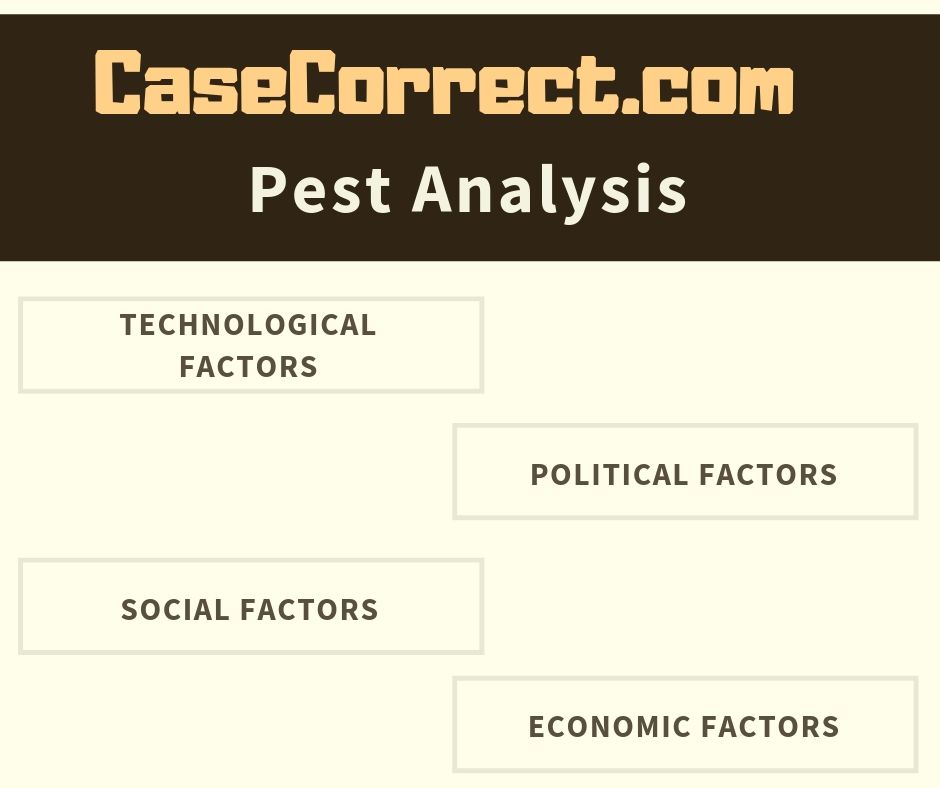Sas Leadership In Business Intelligence Case Analysis
Introduction:
 In 1969, the establishment of Sas Leadership In Business Intelligence Case Study Solution for offering its member doctors with the convenience of clinical and administrative structure. It was connected with Cape Cod Eye surgery and Sas Leadership In Business Intelligence offering numerous vertically integrated services in order to fulfil the requirements of patients.
In 1969, the establishment of Sas Leadership In Business Intelligence Case Study Solution for offering its member doctors with the convenience of clinical and administrative structure. It was connected with Cape Cod Eye surgery and Sas Leadership In Business Intelligence offering numerous vertically integrated services in order to fulfil the requirements of patients.
Through the aggregation of a series of centralized functions, Sas Leadership In Business Intelligence Case Study Solution had actually considerably accomplished the economies of sales permitting the ophthalmologists to provide them with adequate time to focus on their clients and their individual lives. The corporate structure was its real strength that enabled individuals for designing and directing of practices in their proper manner. Considering that 1990, the growth of Sas Leadership In Business Intelligence Case Study Analysis had actually been steady but the healthcare environment trends had understood to erode the monetary returns of Sas Leadership In Business Intelligence Case Study Solution from 50 percent of the 1980's profits to 40 percent in 1990 and 30 percent in 2000.
Problem statement:
 Due to the changes in the guidelines to operate in the Sas Leadership In Business Intelligence Case Study Analysis industry, it was required by the organizations to increase the volume of patients, decrease in expenses of treatments and treatments in order to balance out minimized margins. Annual reduction in the costs had developed issue for physicians in earning a great income.
Due to the changes in the guidelines to operate in the Sas Leadership In Business Intelligence Case Study Analysis industry, it was required by the organizations to increase the volume of patients, decrease in expenses of treatments and treatments in order to balance out minimized margins. Annual reduction in the costs had developed issue for physicians in earning a great income.
Situational Analysis:
SWOT Analysis:
Strength:
• Sas Leadership In Business Intelligence Case Study Solution is understood to have a popular position in the Sas Leadership In Business Intelligence Case Study Analysis market of United States of America.
• Due to its existence in the United States, it has strong customer base line as an approximate of160,000 check outs of patients annually.
• Management of Sas Leadership In Business Intelligence Case Study Analysis including its doctors spend more time to activities in teaching, research study and development for innovative item innovation.
• The staff member had a collective relationship in talking about and management of any specific operation headed by a group leader.
Weakness:
 • Issues in maintenance of scheduling system and central scheduling center of Sas Leadership In Business Intelligence Case Study Analysis pace due to the modification in the procedures followed by Shingleton's group.
• Issues in maintenance of scheduling system and central scheduling center of Sas Leadership In Business Intelligence Case Study Analysis pace due to the modification in the procedures followed by Shingleton's group.
• Financial returns of the organization had been reducing yearly with increase in the development of Sas Leadership In Business Intelligence Case Study Solution market in United States of America by 5 percent.
• Increased volume of patients' visits needed use of increased capacity that lowered the capability of the team the absorption of the flow of modifications.
• Greater clients' volume led the group of severe stress threatening the mission of the practice and the rate of income growth.
Opportunities:
• Growth of the consumer base line in the low-end market will provide them with direct contact with their consumers to offer them with high quality services.
• Regional gamers tend to be crucial gamers in the growth of any leading organization, healthy relationship with relative local players can supply substantial outcome in the worth chain of business operation.
• As there has actually been repayment by the government, restricting new entrants entry in the Sas Leadership In Business Intelligence Case Study Help industry in the United States supplying a benefit to all leading companies in the Sas Leadership In Business Intelligence Case Study Analysis market.
• Production of low-end items, as high-end products are costly and can not be inexpensive for poor individuals getting medication for their specific medical condition.
Threats:
• Development in making use of technology versus the protection of environmental concerns tend to grow the criticism by the groups of environmental management.
• With pace to be the leading organization in the world, efforts are being made by every organization puzzling the consumers and growing issue about their health consciousness.
• Mismanagement of the scheduling procedure of the company may lead to loss of consumers due to the poor services of the group and stress and whined physicians.
PEST Analysis:
Political:
 At present, the rate of Sas Leadership In Business Intelligence Case Study Help market had actually known to be increasing at about 34 million with the growing market rate of about 5 percent. Sas Leadership In Business Intelligence Case Study Solution operating in the Sas Leadership In Business Intelligence Case Study Analysis market in United States of America has actually been known to experience political pressure captivating for reduction in the prices of the items.
At present, the rate of Sas Leadership In Business Intelligence Case Study Help market had actually known to be increasing at about 34 million with the growing market rate of about 5 percent. Sas Leadership In Business Intelligence Case Study Solution operating in the Sas Leadership In Business Intelligence Case Study Analysis market in United States of America has actually been known to experience political pressure captivating for reduction in the prices of the items.
Economical:
Sas Leadership In Business Intelligence Case Study Solution needs adhering to think about laws of customers, laws of employment and laws of health and security in the location where it works. Furthermore, there is a requirement of sticking to added regulations established in the target consumer market. Regardless of, the benefit of policies and laws to well established company like Sas Leadership In Business Intelligence Case Study Help because they offer assistance in minimizing the entry of industry and increasing the confidence of customer with drugs.
Social:
Relevant factors in social terms consist of modification in culture, aging trends, health problems and demographics. Primarily in European and American states, majority of the population is aging increasing the need of drug usage. This is expected to remain same or even increase with regard to time in forthcoming period. The kits of insurance coverage availability and healthcare programs presented provides support in drug buying. With increase in the sees of the clients in Sas Leadership In Business Intelligence Case Study Analysis has actually likewise served as a factor in increasing the need of drugs. Therefore, the effect of social factors are thought about favourable.
Technological:
Improvements through making use of biotechnological approaches and methods has actually assisted in continuous innovation for research and development with contribution of the organization's own physician investing their time in the technological improved devices in the Sas Leadership In Business Intelligence Case Study Solution market. The research study and development needs heavy investment, but it significantly facilitates the quality of drugs throughout its development. Development in technological use like social networks supplying with chance to market themselves straight to low-end market. Regarding to, the impact of technological factors is moderate.
Alternatives:
Incorporation of managerial and HR expertise:
 Due to the mismanagement and increased volume of clients visits affecting the efficiency of doctors and to handle the factor behind their tension. HR practices in the management of operations of the company play a crucial role.
Due to the mismanagement and increased volume of clients visits affecting the efficiency of doctors and to handle the factor behind their tension. HR practices in the management of operations of the company play a crucial role.
Pros:
• They have the charge of recruitment supplying training of management, management of team work, assistance in scheduling, and a methodical procedure of hiring.
• They operate in lead in the development management, management of efficiency, succession preparation, paths of profession and some other aspects in the management of talent.
• In development of reliable relationships at work for productivity and contribution, they provide assistance by understanding the key gamers.
Knowledgeable in terms of guidelines, policies and regulations involving payment that depends upon the city, state or region.
Cons:
• Governmental bodies are mostly worried for financing with the macro-economic concerns rather micro-level focusing on the modern-day practices of HR concentrating on the efficiency and motivation of workforce.
• Development of capability of HR needs investment in development and training of both HR experts line professional with the responsibilities of staff management.
Investment in improving the capability of professional human resource assesses in a variety of methods order to provide the function of HR management. Even, after the rejection of outsourcing, the in-house function of needs to be monitored and examined properly.
Reduction in direct personnel cost:
The strategy is to be focused within the company which is mainly due not because of the requirement however out of sheer requirement which may undertake decrease in expense. Reduction in expense is generally for improvement of efficiency and the portion of earnings growth.
Pros:
• Expense decrease baseline is known to increase the margins of revenue which the sought-after advantage. The organization can carry out expense reduction process according to their need to increase the revenue margin.
• Increase in the productivity through decrease in expense by disconcerting staff members about its entrance in the phase of micro-management.
Improvement in the process standards because the effects of improvising procedures is on the existing procedure nature enhancing the standards of item formation.
Cons:
• Although, the procedure of expense decrease is a favorable one in the development and growth of the organization as a long-lasting strategy, however incorrect cutting of the expense may develop a panic alarm throughout the company.
• Altering while doing sos followed can often be hazardous rather enhancing rate of revenue development depending on the participation of external and internal stakeholders.
• Focusing on the reduction of cost might result in compromise on the quality of item impacting the mission and vision of the organization and threatening the value of the brand.
Development of a new organizational structure:
Modification in the structure of the company is to control the changes in company operations and operate it from a status quo to the wanted state in the future. It aims to bring tactical modifications in the organization for a customer company to guarantee that the corporation operates normally throughout the change.
Pros:
 • Organizations that considers external expert for execution in altering the structure of the organization has the advantage of external influence.
• Organizations that considers external expert for execution in altering the structure of the organization has the advantage of external influence.
• Modification in the structure of organization forces the management of organization to keep an eye on the modification execution to ensure that the processes required are in location and price quote that there are no barriers inhibiting successful implementation of the modification. The most reliable modification in the structure of company forces will gather the intelligence of organization in order to much better understand the way the company runs.
Modifications in the structure of company control the change speed and the manner it changes to be executed. It help the company in adopting changes effectively. It likewise ensures that the adjustment of the change in the structure of company is going on its best speed and the adjustment of process ought to be proceeded.
Cons:
• Modification in the structure of company is not executed straight in a typical manner through leader serving as the leading main members of the organizational management. It can be in some way tough for bringing modification in the structure of the organizational force in order to get company wide buy-in.
• While the team accountable for altering the structure of the company helps the organization to adjust with the carried out changes, modifications in the organizational structure hardly ever has the ability of empowerment and to provide ownership of the changes to the employees in the company.
• Changes in the structure of organization, is to re-organize the entire structure of the organization on how it runs. However, it offers with certainty to run the company in a smooth manner but it should not be carried out during urgency.
